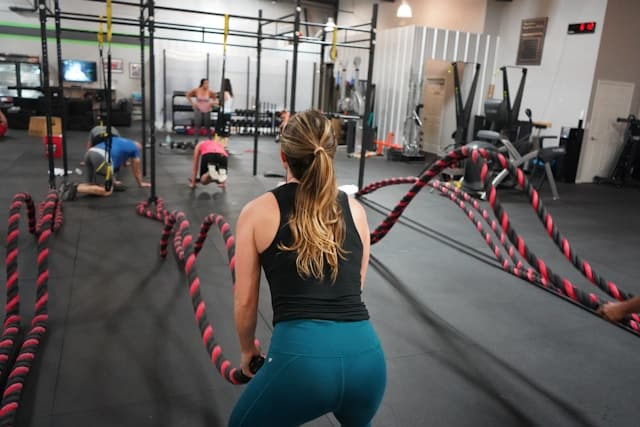In the dynamic world of elite sports, the quest for optimal performance is never-ending. Athletes, coaches, sports scientists, and medics relentlessly seek new methods to gain the slightest competitive edge. This tireless pursuit has led to an exploration of the potential of adaptive feedback loops. Their application to training could redefine the traditional approach to athletic preparation, especially in sprinters. Notably, this article focuses on how these feedback loops can improve training efficiency in elite sprinters.
Using Adaptive Feedback Loops to Optimize Training
Understanding the main concepts behind adaptive feedback loops is the first step in appreciating their potential impact on training efficiency. Feedback is the cornerstone of learning and improvement in any context. It provides the recipient with critical information about their performance relative to their goals. In sports training, athletes usually receive feedback from their coaches, peers, or digital devices.
Lire également : What’s the Best Approach to Building Mental Resilience in Youth Basketball Teams?
These adaptive feedback loops engage athletes in a continuous cycle of action, evaluation, correction, and learning. They can significantly enhance training performance, facilitating quicker mastery of new skills, remarkable improvements in performance, and swift adaptation to changing conditions.
The Role of Google Scholar and PubMed in Researching Adaptive Feedback Loops
Platforms such as Google Scholar and PubMed have transformed how research is conducted. Their vast databases of scholarly articles, reviews, and scientific studies offer a wealth of knowledge on any given topic. The role these platforms play in researching adaptive feedback loops is no exception.
Cela peut vous intéresser : What’s the Role of Oxidative Stress Markers in Customizing Antioxidant Intake for Swimmers?
Google Scholar and PubMed offer a trove of information for sports scientists and researchers keen on understanding how adaptive feedback loops work. A simple search on either platform using the keywords “adaptive feedback loops”, “training”, and “sprinters” yields numerous studies, reviews, and articles that shed light on the topic.
The Application of Adaptive Feedback Loops in Sprint Training
Sprint training in elite athletes demands attention to the minutest details. Every second, each movement, the level of intensity, and the velocity of the sprinter are all crucial elements that can make a significant difference in performance. The application of adaptive feedback loops in sprint training can help athletes and trainers monitor these details in real-time.
By using tools such as Crossref, trainers can access real-time feedback from various sources and swiftly incorporate it into the training regime. This approach helps trainers to adapt training schedules and intensity to suit each athlete’s strengths, weaknesses, and needs. As a result, athletes can achieve optimal performance levels and prevent injuries more effectively.
Harnessing the Power of DOI and SCI in Adaptive Feedback Loops
In the context of adaptive feedback loops in sprint training, two often overlooked yet impactful tools are the DOI (Digital Object Identifier) and SCI (Science Citation Index). These tools are mainly used in research but can be adapted for use in sports training as well.
The DOI system provides a way of tracking digital content, such as sports data or research articles, across platforms and over time. It can be used to follow the progress of an athlete’s training, tracking changes in their performance and identifying patterns or trends. The SCI, on the other hand, measures the frequency with which a specific article has been cited in other work. This is useful for determining the influence and relevance of a particular research study or review in the field of sports training.
The Impact on Elite Sprinters’ Performance
With the continuous evolution of sports science, the impact of adaptive feedback loops on the performance of elite sprinters is undeniable. Feedback loops allow for real-time adjustments to training methods based on an athlete’s progress, strengths, and areas needing improvement. This dynamic approach to training increases the efficiency of each training session, ensuring that athletes are not merely training hard, but training smart.
Digital tools and platforms such as Google Scholar, PubMed, Crossref, DOI, and SCI further enhance the efficiency of feedback loops by providing access to a vast range of research and data. This wealth of information allows trainers and athletes to make evidence-based decisions, ensuring that their training methods are not only adaptive but also scientifically sound.
Integrating Adaptive Feedback Loops into Training Programs
One of the critical considerations in implementing adaptive feedback loops is integrating them into existing training programs seamlessly. This integration involves leveraging technology platforms like Crossref and research databases like Google Scholar and PubMed to provide real-time feedback.
For example, suppose an elite sprinter is undergoing interval training, a type of training characterized by periods of high-intensity work followed by periods of lower intensity rest. In this case, the sprinter’s coach might use a digital device to monitor their performance during the high-intensity intervals, tracking metrics like speed, heart rate, and power output.
This real-time data can be fed into an adaptive feedback loop. The loop allows the coach to assess the sprinter’s performance against their training goals and make immediate adjustments to the intensity distribution if needed. Simultaneously, the coach can access articles on Google Scholar and PubMed to understand the latest research on interval training and intensity distribution, further informing their training decisions.
Moreover, the coach could use DOI Crossref to track changes in the sprinter’s performance over time. For instance, by comparing the performance data from different training sessions, the coach might notice that the sprinter performs best when they have more rest between intervals. This insight could lead to a change in the sprinter’s training program, with more rest periods incorporated into their interval training sessions.
In conclusion, integrating adaptive feedback loops into training programs can enhance training efficiency in elite sprinters. By providing real-time feedback and facilitating immediate adjustments to training methods, these loops enable sprinters to train smarter, not just harder.
Conclusion: The Future of Sprint Training
The future of sprint training lies in the intelligent use of adaptive feedback loops. These loops, powered by digital tools and platforms like Google Scholar, PubMed, Crossref, DOI, and SCI, make it possible for coaches and sprinters to adapt training methods based on real-time performance data and the latest scientific research.
For example, a sprinter’s training volume could be adjusted based on their performance in previous training sessions. If the sprinter shows signs of fatigue or decreased performance, the training volume could be reduced to prevent injury and overtraining. Conversely, if the sprinter is performing well and showing signs of improvement, the training volume could be increased to challenge them further and promote continued progress.
Sports scientists can also use adaptive feedback loops to conduct systematic reviews of training methods and their effectiveness. By analyzing data from various sources, they can identify the most effective training characteristics for enhancing sprint performance.
Overall, adaptive feedback loops represent a shift from traditional, static training methods to dynamic, evidence-based methods. They provide a powerful tool for optimizing training efficiency and maximizing performance in elite sprinters. As the field of sports science continues to evolve, the use of these loops will undoubtedly become more prevalent, redefining how athletes train and perform.











